Crowdfunding Support for Science: The Dark Snow Project
Posted on 17 March 2015 by Guest Author
This is a guest post by Evelyn Messinger from thisplanet.tv
If the Greenland ice sheet took a selfie, it might look like this:
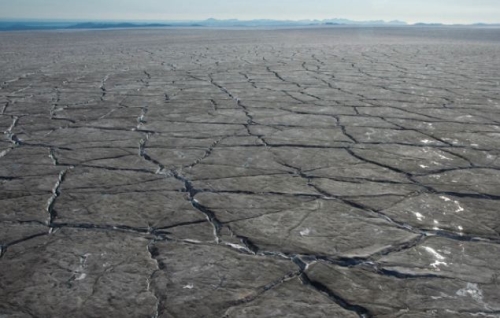
or this:
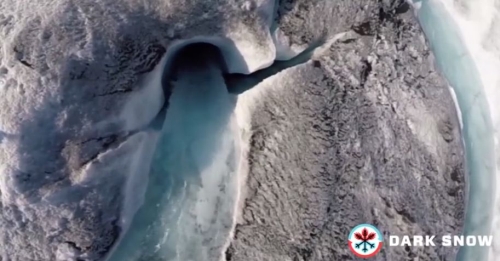
In these images, everything that is soot-colored, brown/grey, is ice. Yes, ice. The dark surface absorbs sunlight, making the ice melt faster than scientists predicted. Since Greenland can't take pictures of itself, a group of scientists is sending a few drones aloft so they can see the situation for themselves.
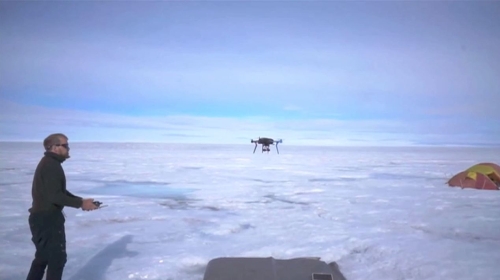
Greenland was never green, or grey or brown, until now. To find out why the ice is dark, Glaciologist Jason Box and his team started the Dark Snow project. Box is featured in this week's This Planet video, What Is Dark Snow?
What Is Dark Snow? — This Planet
Box may represent a new kind of scientist-activist. As profiled in this 2013 article from Climate Desk, Box is determined to get out on the ice come hell or high water (literally), and even willing to team up with the likes of Greenpeace:
"Box increasingly began to think outside of…his last name. Rather than waiting on funding agencies, he teamed up with Greenpeace on a series of expeditions to document, and also dramatize, the ice sheet’s melting. He also began to set up time lapse cameras to observe the ice as it declines."
According to Jeff Masters at Weather Underground, soot from forest fires is one contributor, as he reported here:
"Climate change and forest fires synergistically drive widespread melt events of the Greenland Ice Sheet. Their ice core study found that black carbon from forest fires helped caused a rare, near-ice-sheet-wide surface melt event that melted 97% of Greenland's surface on July 11 - 12 2012, and a similar event in 1889. Since Arctic temperatures and the frequency of forest fires are both expected to rise with climate change, the results suggest that widespread melt events on the Greenland Ice Sheet may begin to occur almost annually by the end of century."
Results from Dark Snow’s 2014 summer expedition are revealing something new - that algae is colonizing the surface of the melting ice sheet.
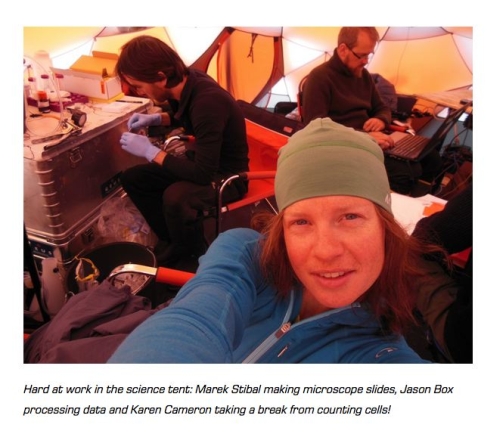
This Dark Snow blog post by team member Karen Cameron explores this discovery, quoting one of the team's scientists, Marek Stibal about the unfortunate color of the algae:
"these guys [the algae] are packed with a dark purple-brown pigment that protects them from sunlight, but also causes the darkening of the ice surface."
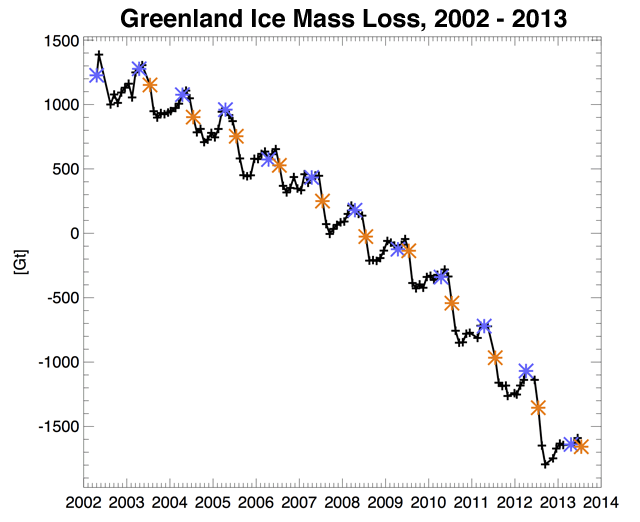 FROM: The Heat is on in Greenland: Support the Dark Snow Project By: Dr. Jeff Masters, 2:50 PM GMT on June 25, 2014
FROM: The Heat is on in Greenland: Support the Dark Snow Project By: Dr. Jeff Masters, 2:50 PM GMT on June 25, 2014
Help them at DarkSnow.org
Masters noted in his Weather Underground article that Dark Snow is "the first crowd-funded Arctic expedition."
Click here to visit their website which has lots of interesting information, and you can contribute to this venture. Crowd funding allowed the scientists to purchase their drones and is letting them spend time on writing their reports rather than writing grant proposals.
This Planet is a series of 90-second videos that portray this moment of reckoning between human nature and the force of nature, here at the tipping point of our collective future. You can learn more about us, and see the bios of This Planet's contributors and advisors here.
These words, by a poet of the last century, set the stage for seeing the world in a new way:
“Learn, O voyager, to walk the roll
of earth, the pitch and fall that swings
across these trees those stars:
that swings the sunlight up the wall.”
— Archibald MacLeish































 Arguments
Arguments































Quick question. What is that "Greenland Ice Mass Loss" graph actually showing? I'm a bit confused by the positive and negative numbers on the y-axis.
Tracking it back to the original figure you get caption of:
"Monthly mass anomalies (in Gigatonnes, Gt) for the Greenland ice sheet since April 2002 estimated from GRACE measurements. The anomalies are expressed as departures from the 2002-2014 mean value for each month. For reference, orange asterisks denote June values (or May for those years when June is missing)."
Thanks, scaddenp, the caption makes it clear. It's a shame it was missing from this post.